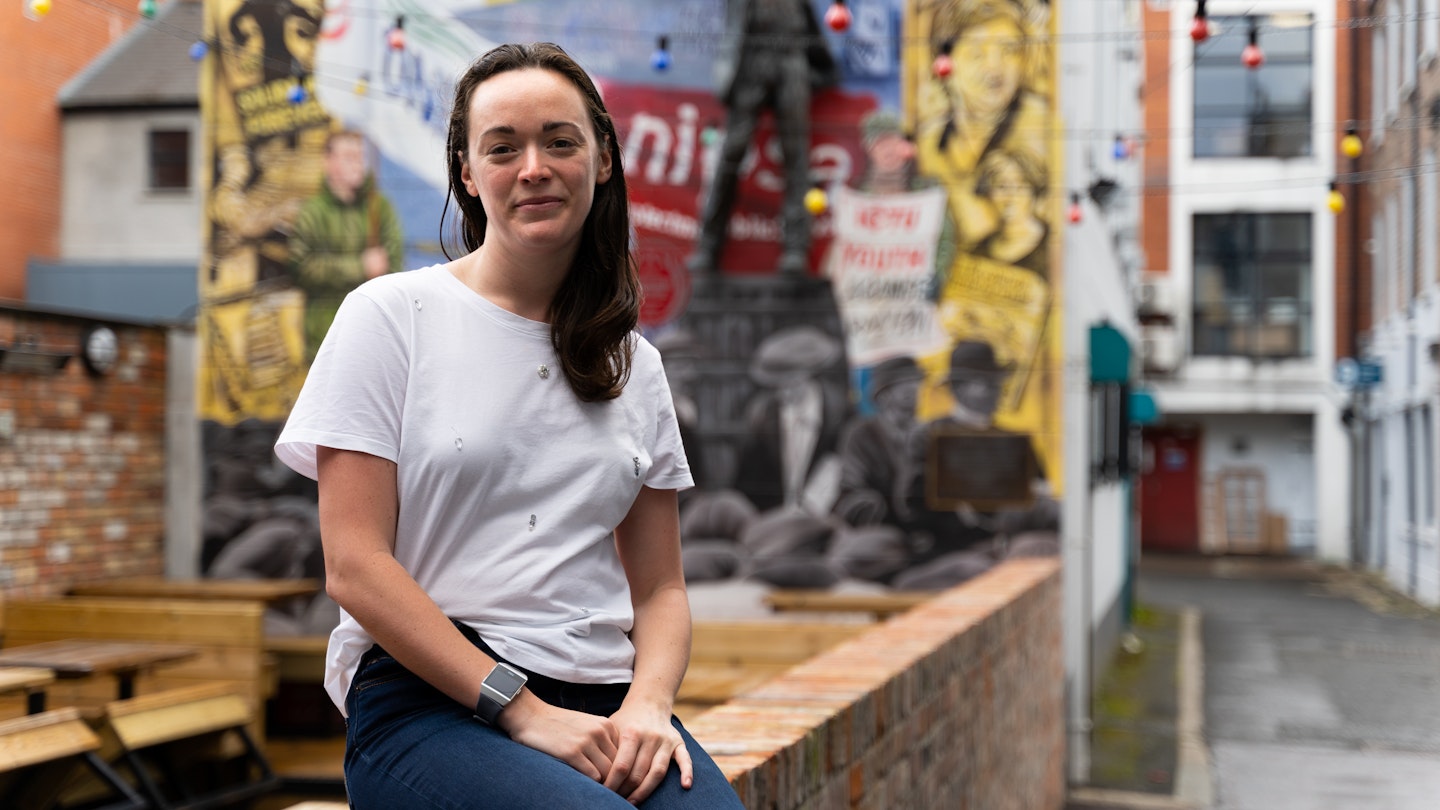Belfast and Northern Ireland were once synonymous with words like “terrorist attack” and “bombing,” but it’s a completely different place today. It’s been over 25 years since the ceasefires and 22 since the Good Friday Agreement came into effect, which, combined, brought peace to our little nation.
I didn’t grow up in Belfast but in the lake county of Fermanagh, about 80 miles west or “in the sticks,” as Belfast natives often say. Instead, I moved there to attend university and have been a city resident for over 10 years. My first memories of the city were in the car with my parents in the ’90s, and as soon as the motorway lanes went from two to three, one of them would ensure the car doors were locked. The city didn’t have a great reputation, even locally. However, all that has changed, and now Belfast is the city behind Game of Thrones and its street art rivals that of anywhere else in the world. The creativity and arts sectors have transformed the city over the last two decades.
Quartered City of Belfast
Belfast is a city of “quarters,” including Cathedral Quarter, Linen Quarter, Queen’s Quarter, Titanic Quarter, Market Quarter, and the Gaeltacht Quarter. It doesn’t take a mathematician to work out that there’s much to visit in all these areas.
Cathedral Quarter – A Thriving Hub
Cathedral Quarter, aptly named after St Anne’s Cathedral, was once an area where there wasn’t much to do; it wasn’t vibrant. Today, it’s the opposite of that. The cobbled streets adorned with fairy lights are thriving due to an increased workforce and the new University of Ulster campus.
The Duke of York, a pub with antique wooden furnishings and walls lined with Guinness paraphernalia, is often believed to serve the finest pints in the country. However, that accolade is actually given to Robinsons, located by the main bus and train station, where enjoying a pint and a burger by the fireplace in winter is a must. The Duke of York, once an “old man’s pub,” is now a bustling spot for post-work drinks, where patrons can sit outside in the alleyway to admire some of the finest street art in the city.
The street art in Cathedral Quarter is not just limited to sectarian murals, but features pieces celebrating Northern Ireland’s achievements in sports and television, including notable figures like Jamie Dornan and George Best. Additionally, candid reflections on serious issues, such as racism and poor working conditions, are also captured in artwork.
Queen’s Quarter – A Student’s Paradise
A mile-and-a-half from St Anne’s Square lies Queen’s University. This historic institution features the striking Lanyon Building, showcasing Tudor and Gothic architecture inspired by other UK universities. Non-students are welcome to wander the grounds and admire the architecture.
This exploration will likely lead to Belfast’s Botanical Gardens, which has recently undergone a £3.8 million investment, featuring the re-opened Tropical Ravine that showcases a unique collection of biodiversity. It’s a popular spot for students and locals to unwind with ice cream and picnics during the summer.
The student vibe ensures quality cuisine at reasonable prices. A fantastic option to fuel up for a day of exploration is Café Conor across from the Ulster Museum. Breakfast here sets the tone for an adventurous day.
Titanic Quarter: Embracing History and Culture
With Belfast comes the memory of the fateful Titanic. The city boasts its own Titanic Quarter, developed on reclaimed land, which has become a hub for creativity and technology, providing jobs for thousands of locals.
Near the Titanic Belfast museum, visitors will discover lesser-known spots during an evening stroll along the River Lagan’s shoreline. This area offers a wealth of landmarks associated with Game of Thrones, such as Titanic’s Dock & Pump House and HMS Caroline, the last surviving ship from the WWI Battle of Jutland.
The Titanic Hotel provides breathtaking views across the Game of Thrones, Kings Landing set, featuring scenes from season eight. This hotel, which previously housed the drafting offices of Harland and Wolff, pays tribute to the legacy of the Titanic.
Afternoon tea at the Titanic Hotel is a delightful experience enjoyed in one of the old presentation rooms, overlooking what was once a drawing room, now transformed into a bar. The grand ceilings, unchanged from their original design, add to the charm of this historical establishment.
Belfast is a city with so much to offer. While other UK cities have flourished, Belfast, hindered by conflict, has made impressive strides. Recent investments across various sectors—from film and television to tourism focused on its iconic ship—have helped ensure that Belfast’s turbulent past takes a backseat to its vibrant present.





